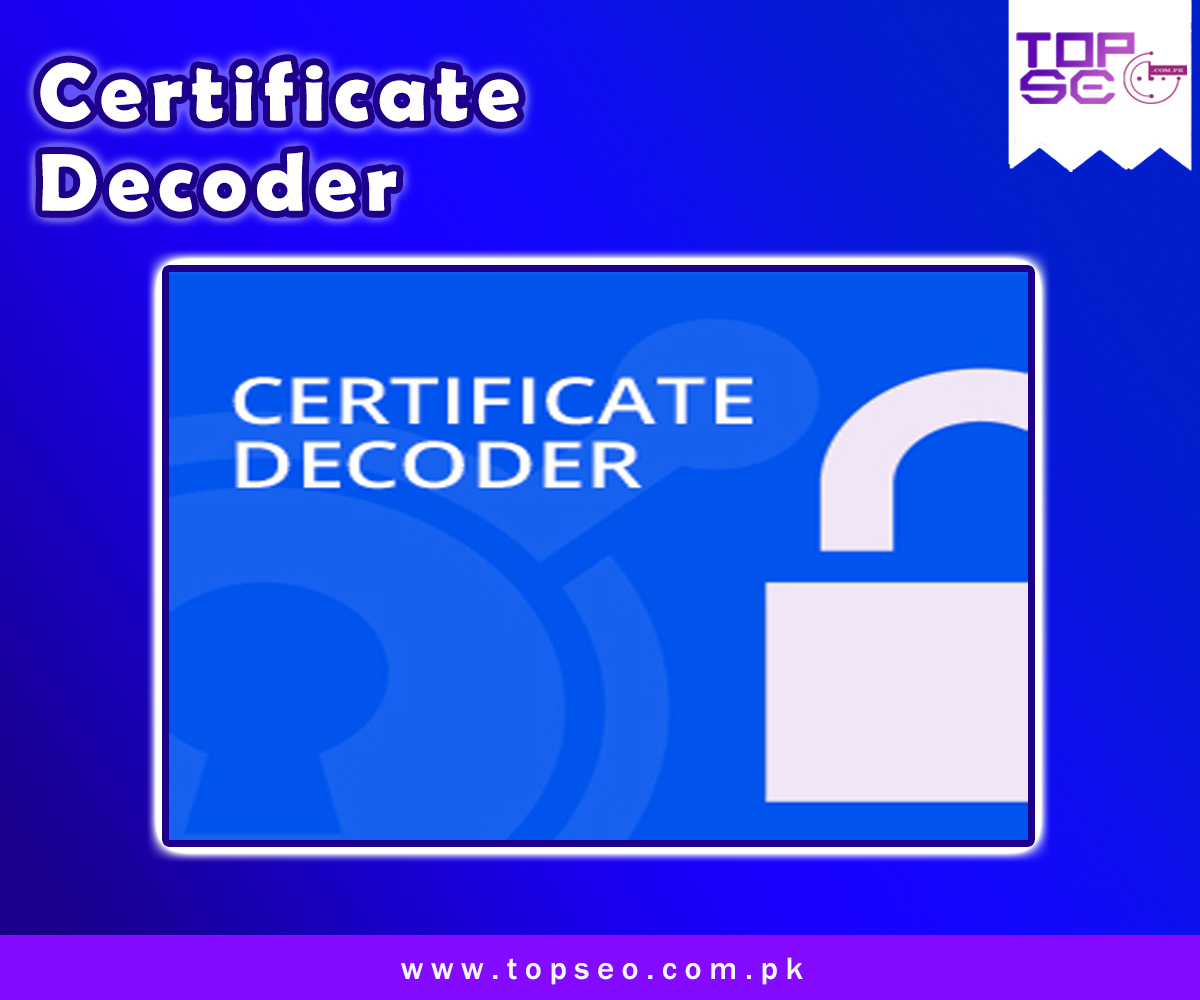




Certificate Decoder is a tool that allows users to decode digital certificates and view their contents in an easy-to-read format. It can be used to view the raw data in a digital certificate, such as the issuer, subject, and public key, as well as verify the trustworthiness of the certificate. This is particularly useful for verifying the authenticity of digital certificates, as it allows users to check for any discrepancies between the certificate and the issuer's website. This ensures that the certificate is not fraudulent, and that it is issued by a trusted source. By viewing the raw data in the digital certificate, users can confirm that the certificate is legitimate and has not been tampered with. Additionally, users can ensure that the certificate is issued by a trusted source by verifying the issuer's website. This helps to ensure that the certificate is not fraudulent, and provides users with the assurance that their data is secure.
Certificate Decoder is used to decode the information contained within an SSL certificate and display it in an easy to read format. This command helps to quickly and easily view the contents of a certificate, including its validity period, issuer, subject, and other information. Certificate Decoder is a useful tool for verifying the authenticity of an SSL certificate and making sure that the certificate is from a trusted source. It can also be used to check the validity of the certificate, ensuring that it won't expire before its intended use.
What are the benefits of using a certificated decoder?
A certificate decoder provides an extra layer of security by ensuring that the data being transmitted is encrypted and only readable by the intended recipient. This helps to protect users' data from being intercepted or stolen by malicious actors. Additionally, it provides users with peace of mind that their data is secure. Certificate decoders work by verifying the authenticity of the certificate being presented. It verifies that the certificate is indeed issued by a trusted party and that the data being transmitted is encrypted and not readable by anyone else. This verification process helps to protect users' data from being intercepted or stolen as it is transmitted across networks.
The Certificate Decoder allows you to decode your PEM encoded SSL certificate and verify that it contains the correct information. PEM encoded certificates contain all of the certificate's information as well as the public key in a block of encoded text. A certificate can also be viewed by double-clicking its file on a Windows computer. The Certificate Decoder can be used by simply pasting the text of your certificate into the box below. Certificates should begin with "-----BEGIN CERTIFICATE-----" and end with "-----END CERTIFICATE-----". You can use the SSL Checker to verify that the SSL has been installed correctly on your server once it has been installed.
This OpenSSL command can be used to decode certificates on your own computer:
openssl x509 -in certificate.crt -text -noout
Do you need further assistance? You may use our SSL Checker to verify that the certificate you just decoded is correctly installed after you have successfully installed it.
A helpful tip is to verify that the information on your SSL certificate is accurate before proceeding. It is better to find out now rather than later. In the event that a certificate contains incorrect information, you may need to generate a new CSR and reissue the certificate.







